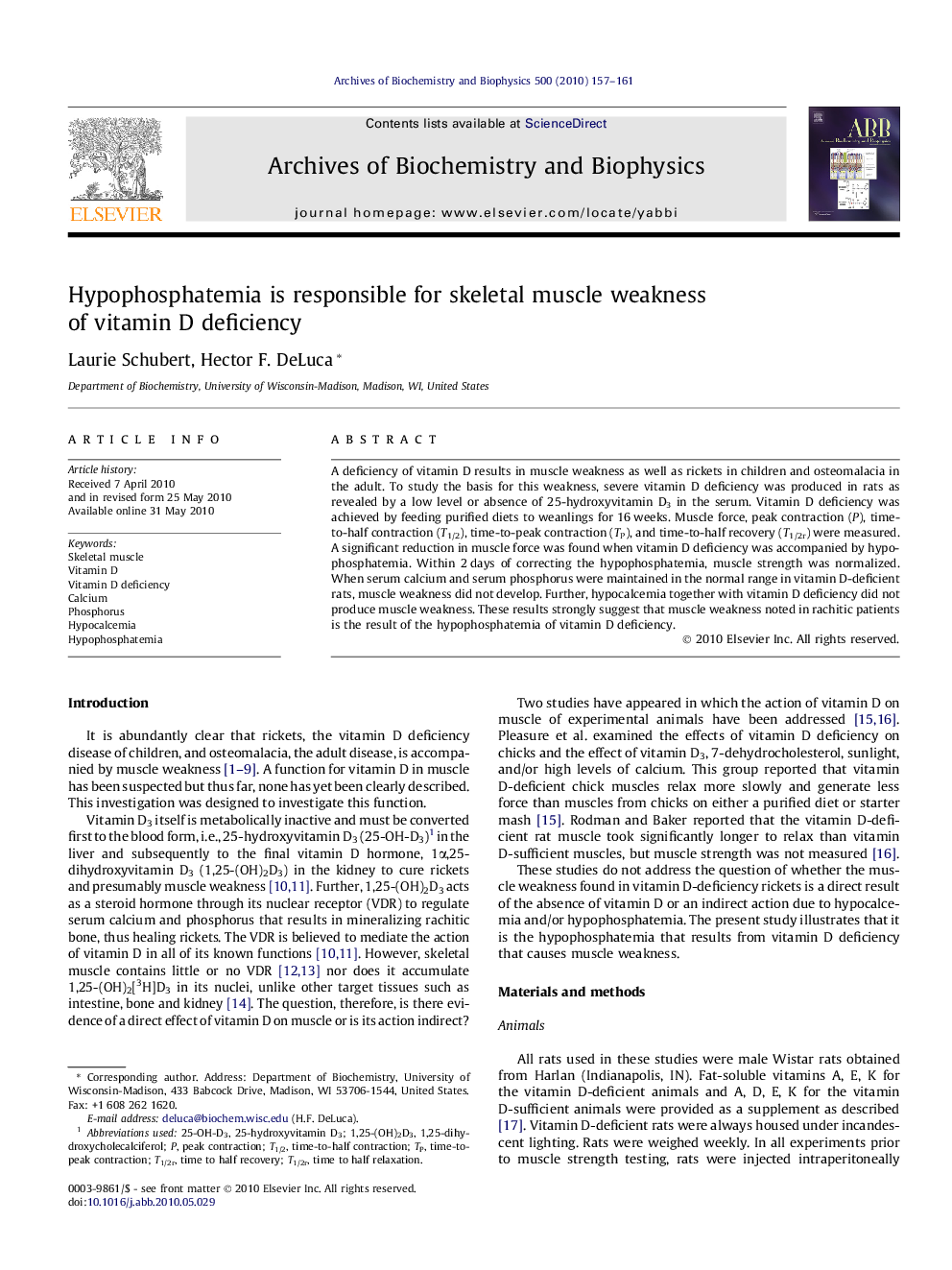| Article ID | Journal | Published Year | Pages | File Type |
|---|---|---|---|---|
| 1926024 | Archives of Biochemistry and Biophysics | 2010 | 5 Pages |
A deficiency of vitamin D results in muscle weakness as well as rickets in children and osteomalacia in the adult. To study the basis for this weakness, severe vitamin D deficiency was produced in rats as revealed by a low level or absence of 25-hydroxyvitamin D3 in the serum. Vitamin D deficiency was achieved by feeding purified diets to weanlings for 16 weeks. Muscle force, peak contraction (P), time-to-half contraction (T1/2), time-to-peak contraction (TP), and time-to-half recovery (T1/2r) were measured. A significant reduction in muscle force was found when vitamin D deficiency was accompanied by hypophosphatemia. Within 2 days of correcting the hypophosphatemia, muscle strength was normalized. When serum calcium and serum phosphorus were maintained in the normal range in vitamin D-deficient rats, muscle weakness did not develop. Further, hypocalcemia together with vitamin D deficiency did not produce muscle weakness. These results strongly suggest that muscle weakness noted in rachitic patients is the result of the hypophosphatemia of vitamin D deficiency.
